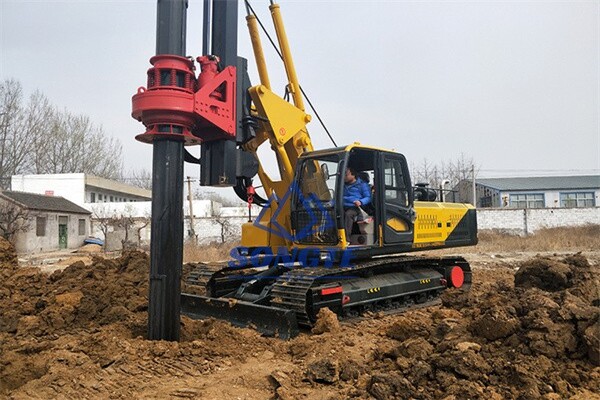Rotary pile foundations are becoming essential in high-rise buildings and infrastructure projects requiring deep, stable foundations. Their popularity continues to rise in 2025 due to increased demand for high-load applications and minimal disturbance installation.
2.1 What is Rotary Piling?
Rotary piling involves drilling into the ground using a rotating tool to displace soil and form a borehole that is later filled with reinforced concrete to form a pile.
2.2 How It Differs from Traditional Methods
Unlike driven piles, rotary piles don’t rely on impact. This minimizes vibration and noise, which is critical in developed or sensitive areas.
2.3 Equipment Used in Rotary Piling
The method uses rotary rigs, drilling buckets, augers, and Kelly bars, with the ability to switch tools depending on soil hardness and depth.
2.4 Soil Suitability
Rotary piles perform well in various soil types, including sand, clay, and gravel. They can even be installed through boulders and soft rock layers.
2.5 Faster Installation in Urban Zones
In cities, rotary piling helps prevent damage to nearby buildings and underground utilities by operating quietly and with great precision.
2.6 Supporting Heavy Loads
These piles are ideal for supporting high-rise towers, bridges, and industrial plants where the foundation must carry extremely heavy loads.
2.7 Accuracy with GPS and Sensors
Modern rigs use GPS and torque control systems to ensure perfect verticality and optimal pile depth, reducing errors and increasing strength.
2.8 Customizable Depth and Diameter
Engineers can easily modify the depth and diameter of rotary piles depending on load requirements and soil conditions.
2.9 Economic Impact
Though machinery cost is high, rotary piling reduces delays, lowers risk, and provides long-term foundation integrity.
2.10 Growing Demand in 2025
As more cities upgrade infrastructure and aim for taller, stronger buildings, rotary pile foundations will continue to dominate deep foundation solutions.

